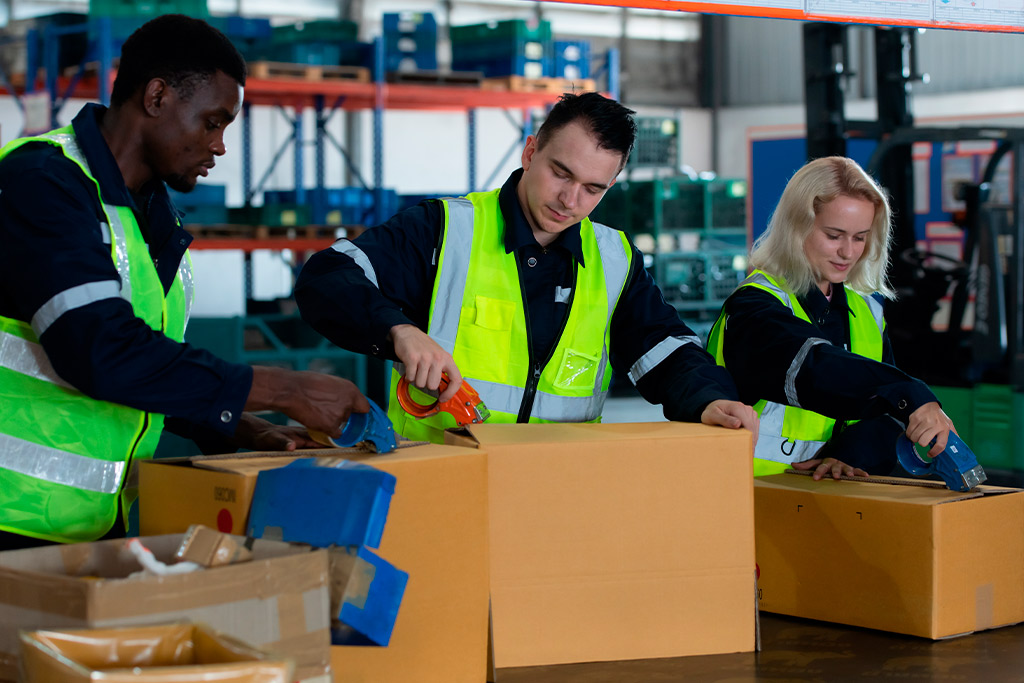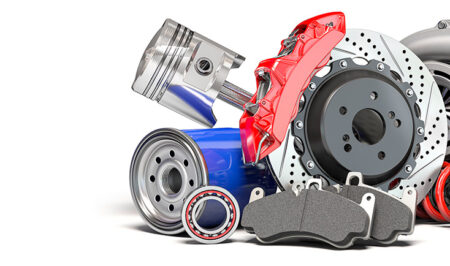10 Ways to Optimize Aftermarket Auto Parts Shipping Costs
Aftermarket auto parts are replacement or additional components not manufactured by the original equipment manufacturer (OEM), yet designed to perform the same functions. These components represent a vital segment of the automotive industry, providing cost-effective alternatives for repairs, upgrades, and customizations. The aftermarket sector thrives on timely delivery.
Clients are waiting for their parts, and delays can impact customer satisfaction and business reputation.
Cross-border shipping of automotive parts presents unique challenges:
- Complex customs clearance processes that vary by country
- Regulatory compliance requirements for automotive components
- Managing shipping costs while maintaining competitive pricing
- Securing valuable shipments against theft and damage
Efficient logistics for this industry are a competitive necessity. The complex world of automotive supply chain management requires sophisticated solutions to ensure parts move seamlessly from manufacturers to distributors to end users. Businesses that master this landscape gain advantages in customer satisfaction, operational efficiency, and market reach.
10 Practical Tips to Cut Costs and Speed Up Auto Parts Shipping

Shipping aftermarket auto parts efficiently is fundamental for maintaining a competitive advantage in today’s fast-paced market. Implement these proven strategies to reduce costs and accelerate delivery times while ensuring your parts arrive intact and on time.
1. Optimize packaging to reduce dimensional weight and prevent damage.
Use custom-fit packaging that minimizes space while providing adequate protection for sensitive automotive components. This tailored approach significantly reduces dimensional weight charges, which are common pitfalls in shipping costs, and mitigates the risk of costly damage claims by ensuring that parts are well-secured throughout transit.
2. Consolidate shipments to maximize load efficiency and minimize per-unit shipping costs.
Combine multiple orders going to the same region to qualify for better rates and reduce the environmental impact of shipping partial loads. This practice not only reduces the environmental impact associated with frequent partial loads but also streamlines the logistics process, leading to significant savings on per-unit shipping costs.
3. Leverage technology for real-time tracking and inventory management.
Implement IoT sensors and GPS tracking systems to monitor shipments, anticipate delays, and maintain accurate inventory levels. This technology enables you to promptly anticipate delays, respond to issues in real time, and uphold accurate inventory levels. Increased transparency not only builds customer confidence but also helps in preventing stockouts, ensuring that you maintain an adequate supply of parts.
4. Partner with specialized carriers experienced in automotive parts logistics.
Work with providers like Mex-Cal Truckline who understand the unique requirements of automotive shipping, including proper handling of sensitive components and specialized packaging needs. These specialized carriers understand the critical requirements for proper handling of sensitive components, offer specialized packaging solutions, and can navigate the logistics landscape efficiently to ensure timely deliveries.
5. Understand and comply with cross-border regulations to avoid delays and fines.
Ensure proper documentation, classification, and labeling for international shipments, particularly between the US and Mexico, where C-TPAT certification and security protocols are essential. Understanding these regulations helps prevent unnecessary delays and potential fines, ensuring smooth customs clearance.
6. Negotiate rates with carriers based on shipping volume and frequency.
Leverage consistent shipping patterns and volume commitments to secure better pricing. Consider multi-year contracts for stable, advantageous rates on regular shipments. By demonstrating a reliable shipping schedule, you can leverage multi-year contracts that offer stability and advantageous rates on your regular shipments, leading to significant long-term savings.
7. Utilize local distribution centers to shorten delivery times and reduce international shipping fees.
Strategically place inventory in local distribution centers closer to your customer base to minimize last-mile delivery costs and optimize fulfillment speed. This is particularly important for time-sensitive automotive repairs, as shorter delivery times enhance customer satisfaction and improve service reliability.
8. Schedule shipments strategically to avoid peak times and surcharges.
Plan shipments around known high-volume shipping periods and anticipate congestion at border crossings. By avoiding peak times for shipping, you can often take advantage of lower rates and faster transit times, ensuring that your parts reach customers promptly and cost-effectively.
9. Implement data analytics to identify inefficiencies and continuously improve processes.
Regularly collect and analyze shipping data to identify patterns and potential inefficiencies in your logistics operations. Utilizing data analytics enables you to predict challenges before they arise and refine your logistics strategy accordingly. This ongoing optimization not only leads to important insights but also contributes to significant cost savings over time.
10. Foster Strong Relationships with Suppliers and Carriers.
Build and maintain strong relationships with your suppliers and carriers to facilitate better negotiation outcomes and enhance communication. Collaborating closely on shipping schedules and addressing logistics challenges together can significantly enhance operational flexibility, reduce overall costs, and accelerate delivery times, ultimately benefiting your business and customers.
Aftermarket Auto Parts Trucking Costs: San Diego ↔ Tijuana
The USDA Mexico Transport Cost Indicator and Commercial Trucking Insurance reports confirm that cross-border shipments can vary widely depending on load size, trailer type, and customs processing.
| Shipment Type | Average Distance | Estimated Cost (USD) | Typical Cost Drivers |
|---|---|---|---|
| Small partial load (1–2 pallets, small auto parts) | 10–15 miles | $70–100 | Customs fees, border wait time, fixed minimum charge |
| Medium load (LTL) (3–6 pallets, standard parts) | 15–30 miles | $120–180 | Transloading, customs documentation, short-haul premium |
| Full Truckload (FTL) (full trailer of parts) | 20–30 miles | $200–300+ | Customs brokerage, permits, and potential inspection delays |
💡 Note: Even short-distance routes can cost more because cross-border trips include customs clearance and security processes.
Key Considerations for Cross-Border Shipping of Aftermarket Auto Parts

Shipping aftermarket auto parts across borders, particularly between the US and Mexico, requires careful attention to regulatory requirements. Essential documentation includes commercial invoices, certificates of origin, packing lists, and customs declarations. For companies utilizing the busy Tijuana-San Diego corridor, compliance with C-TPAT (Customs-Trade Partnership Against Terrorism) certification can significantly reduce inspection times and border delays.
Accurate part classification and labeling are crucial for efficient customs clearance. Misclassified automotive components can lead to:
- Incorrect tariff assessments and unexpected duties
- Extended customs holds and inspections
- Potential fines for compliance violations
- Supply chain disruptions affecting customer satisfaction
To mitigate risks in cross-border shipments, implement these strategies:
- Partner with customs brokers familiar with automotive parts regulations
- Utilize comprehensive security measures, including 21-point inspections and K-9 screening
- Implement real-time GPS tracking for shipment visibility
- Select specialized carriers with experience in automotive logistics.
Leveraging Logistics Partnerships for Better Efficiency and Cost Savings

Building a resilient and cost-effective supply chain doesn’t just depend on trucks and warehouses. It relies on the quality of your partnerships. In the automotive sector, where delays or mishandling can disrupt entire production lines, collaborating with the right logistics providers becomes a strategic advantage. By aligning with partners who bring expertise, integrated services, and long-term value, companies can unlock efficiencies that go far beyond simple transportation.
- Specialized expertise matters: Working with logistics providers who understand automotive parts ensures proper handling and compliance. Companies like Mex-Cal Truckline bring 40+ years of industry expertise to protect sensitive components and expedite delivery.
- Value-added services create complete solutions: Look beyond basic transportation to partners offering integrated services:
- Customs brokerage to navigate cross-border regulations
- Warehousing and inventory management
- Last-mile delivery coordination
- Real-time tracking and visibility
These comprehensive offerings eliminate the need to coordinate with multiple providers.
- Selecting the right partner: Evaluate potential logistics partners based on:
- Experience with automotive parts and cross-border shipping
- Security protocols (GPS tracking, guards, inspection processes)
- Technology capabilities for visibility and reporting
- Regulatory compliance certifications (C-TPAT, bonded services)
- Long-term relationships drive continuous improvement: Strategic partnerships with specialized logistics providers lead to optimized routes, consolidated shipments, and improved efficiency over time. These relationships transform logistics from a cost center to a competitive advantage.
Maximize efficiency and minimize costs in your aftermarket auto parts shipping with Mex-Cal Truckline. With over 40 years of industry expertise, we provide comprehensive logistics solutions tailored to your needs. Whether you’re dealing with automotive parts, high-tech equipment, or cross-border shipments, our state-of-the-art fleet and advanced tracking systems ensure timely and secure deliveries.
Streamline your supply chain and focus on growing your business while we handle the logistics. Contact us today to learn more about our automotive logistics solutions and how we can help streamline your supply chain.





